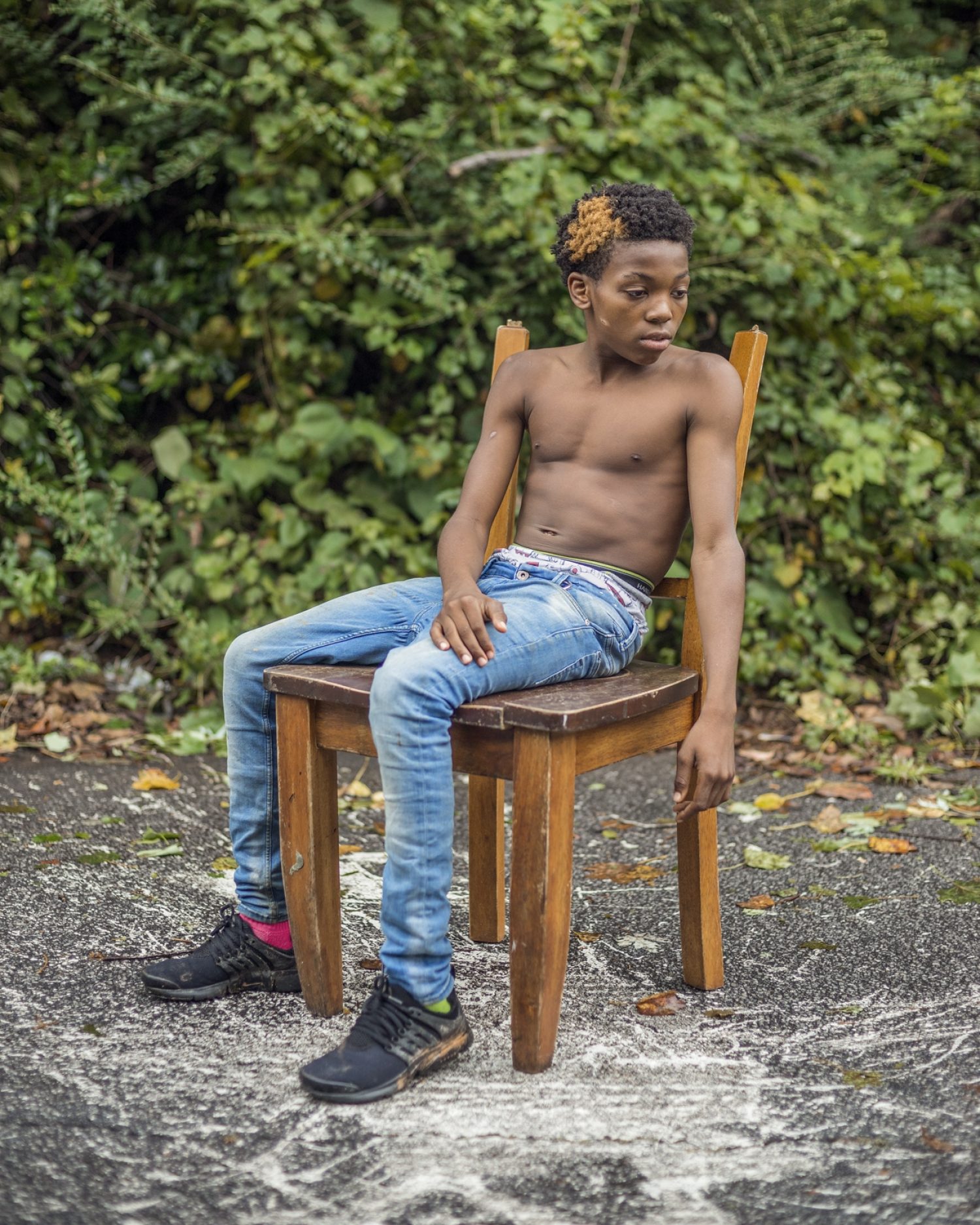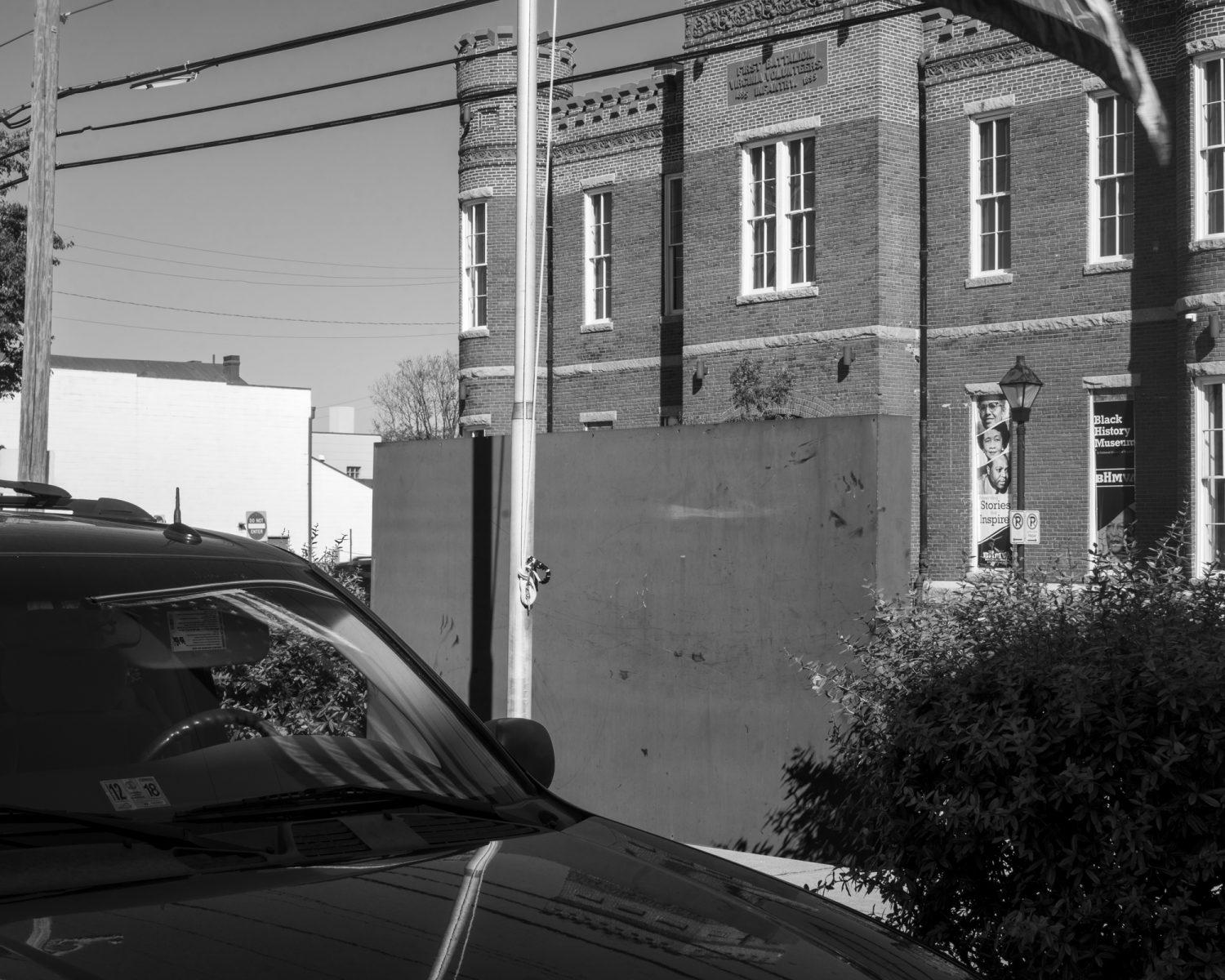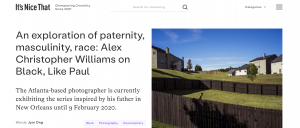Apr 17–30, 2020
Online Exhibition
-

1/12: Untitled, from the series, Black, Like Paul
-

2/12: Untitled, from the series, Black, Like Paul
-

3/12: Untitled, from the series, Black, Like Paul
-

4/12: Untitled, from the series, Black, Like Paul
-

5/12: Untitled, from the series, Black, Like Paul
-

6/12: Untitled, from the series, Black, Like Paul
-

7/12: Untitled, from the series, Black, Like Paul
-

8/12: Untitled, from the series, Black, Like Paul
-

9/12: Untitled, from the series, Black, Like Paul
-

10/12: Untitled, from the series, Black, Like Paul
-

11/12: Untitled, from the series, Black, Like Paul
-

12/12: Untitled, from the series, Black, Like Paul
In his series, Black, Like Paul, Atlanta based photographer Alex Christopher Williams looks into a slice of American identity that is not often shared. His project examines what it means to be mixed raced in this country from his own experience of largely passing as White. These photographs are a deeply personal effort to imagine how his life would have been different had he looked more like his African American father. Black, Like Paul, recognizes the impossible nature of this question–how do we confront a past that has not occurred? Williams acknowledges the precariousness of the journey he’s started. Rather than hunt for answers, he accepts this unstable structure, producing pictures that are reflexive and in the moment, even as they connect with personal and historical past narratives.
Starting this project during his MFA at the University of Hartford, Williams sought to photograph men in the image of his father, hoping to find an objective view of paternal masculinity. Gaining some space from his own family eventually led him to expand his project with a larger historical framework. Williams began to follow the routes of migration used by the Underground Railroad to create his pictures. These photographs include portraits of young boys on the cusp of adolescence, as well as men of his father’s age or older. This range in generations mapped onto a geographical swath imbued with traces of trauma places the project in constant state of looking backwards and forwards, reevaluating the past and considering the future - much like Williams himself. In a diptych, Williams shows both a photographic positive and negative of a statue of John Henry, the African American folk hero who is said to have beat a steam-powered machine in a race to dig a train tunnel, only to die afterwards when his heart gave out from the stress. Here, Williams shows us Henry as both Black and White, the negative toning his skin to a pale, x-ray-like whiteness. The image asks what constitutes strength and masculinity, in the past and the present, and what success stories can look like depending on who gets to tell them.
Williams’ photographs themselves, along with the framework behind them, evoke the feeling of doing multiple things simultaneously. Throughout this series, images function as documents, snapshots, or elegantly staged portraits - although chances are you won’t guess which one is which. A photograph of a young boy seated on the ground in a classic twisted pose may strike you as a carefully composed image. Instead, Williams saw the young man, his neighbor, fixing a bicycle, and simply removed the bike and asked him to hold the pose: click. In another image, Williams’ own shadow stretches above an older man holding a cane. It is a striking picture that speaks to aging, frailty, and the perilous journey of being a Black man in America. While we can see these notions within the photograph, in reality, Williams was making a photograph of a landscape outside of the frame. When the man walked up he, "engaged him from on top of my car and then made his photograph casually on the fly."
These explanations aren’t to paint the photographs that make up Black, Like Paul as mistakes rather, they showcase the agility of Williams as an artist. The influence of Jazz and improv are both creative practices that he points to as references for the way he makes his own work. The quickness and deftness of a jazz musician, or the ability of an improv comedian to follow a winding and unpredictable narrative both feel quite apt when viewing his photographs. Williams does not feel beholden to contain this project within a certain genre. While his interests stem from a desire to learn from his past, these images urge us to consider our present, to break away from the way we typically see the world, and to imagine what it looks like for someone else.
Alex Christopher Williams was selected for the Honorably Mentioned series by Julie Crooks, Assistant Curator of Photography at the Art Gallery of Ontario. Honorably Mentioned highlights the work of artists chosen as Honorable Mentions for Fellowship 20. Fellowship is Silver Eye's international juried photography competition. For nineteen years this competition has recognized both rising talent and established photographers from all corners of the globe, and from the state of Pennsylvania.
Participating Artist
Alex Christopher Williams is a photographer and independent curator at Minor League, an artists-run curatorial project in Atlanta, GA. He received his MFA in Photography from the University of Hartford and his BFA in Photography from Savannah College of Art and Design. His work has been previously shown at the Ogden Museum of Southern Art, New Orleans, LA, The Safe House Black History Museum, Greensboro, AL, Wish Gallery, MINT, whitespec, all in Atlanta, GA, Con Artist Collective, New York, NY, and C/O Berlin, DE. His work has been featured in such publications as Der Greif, Oxford American, Photo-Emphasis, Juxtapoz Magazine, The Daily Beast, Orangbeg Press, Mull it Over and Aint-Bad Magazine.

